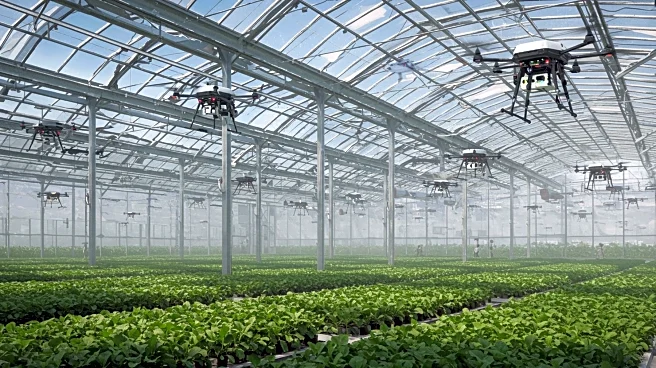What's Happening?
Farmonaut has released an essential guide detailing new technologies reshaping agriculture in 2025. These innovations include precision sensing, AI, robotics, gene editing, and controlled environment agriculture (CEA). The guide emphasizes the integration of these technologies into cohesive systems that enhance farm productivity and climate resilience. By utilizing sensors, satellites, and AI models, farms can optimize inputs, increase yields, and reduce emissions. The guide also highlights the role of gene editing in developing resilient crop varieties and the benefits of CEA in localizing food production and reducing supply chain losses.
Why It's Important?
The adoption of advanced agricultural technologies is crucial for addressing the challenges posed by climate change and resource scarcity. These innovations offer significant potential to improve efficiency and sustainability in farming practices. By reducing inputs and emissions, these technologies can help mitigate environmental impacts while enhancing food security. The integration of AI and robotics also represents a shift towards more data-driven and automated farming, which can increase profitability and resilience against climate extremes. This transformation is particularly relevant for U.S. agriculture, where climate variability and resource management are ongoing concerns.
What's Next?
As these technologies become more accessible, farmers and agricultural stakeholders are likely to explore their implementation to enhance productivity and sustainability. The focus will be on integrating these systems into existing operations and overcoming barriers such as cost and connectivity. Policymakers and industry leaders may also play a role in facilitating the adoption of these technologies through incentives and support for research and development. The continued evolution of regulatory frameworks, particularly concerning gene editing, will be critical in determining the pace and extent of these innovations' adoption.













